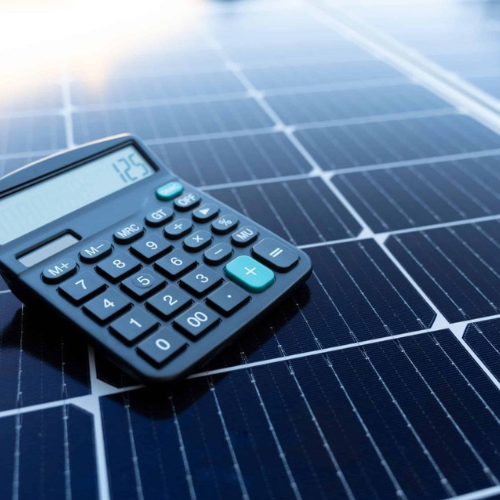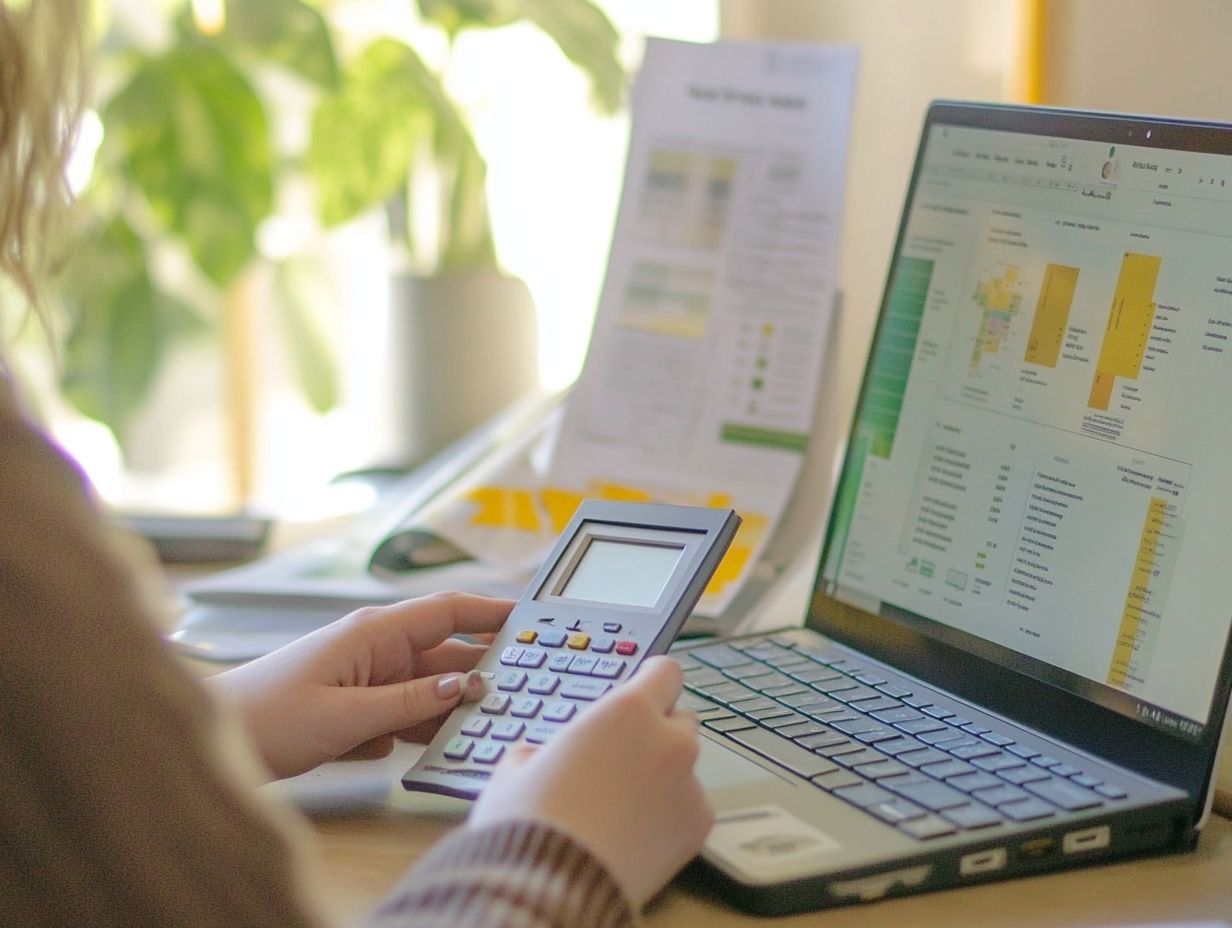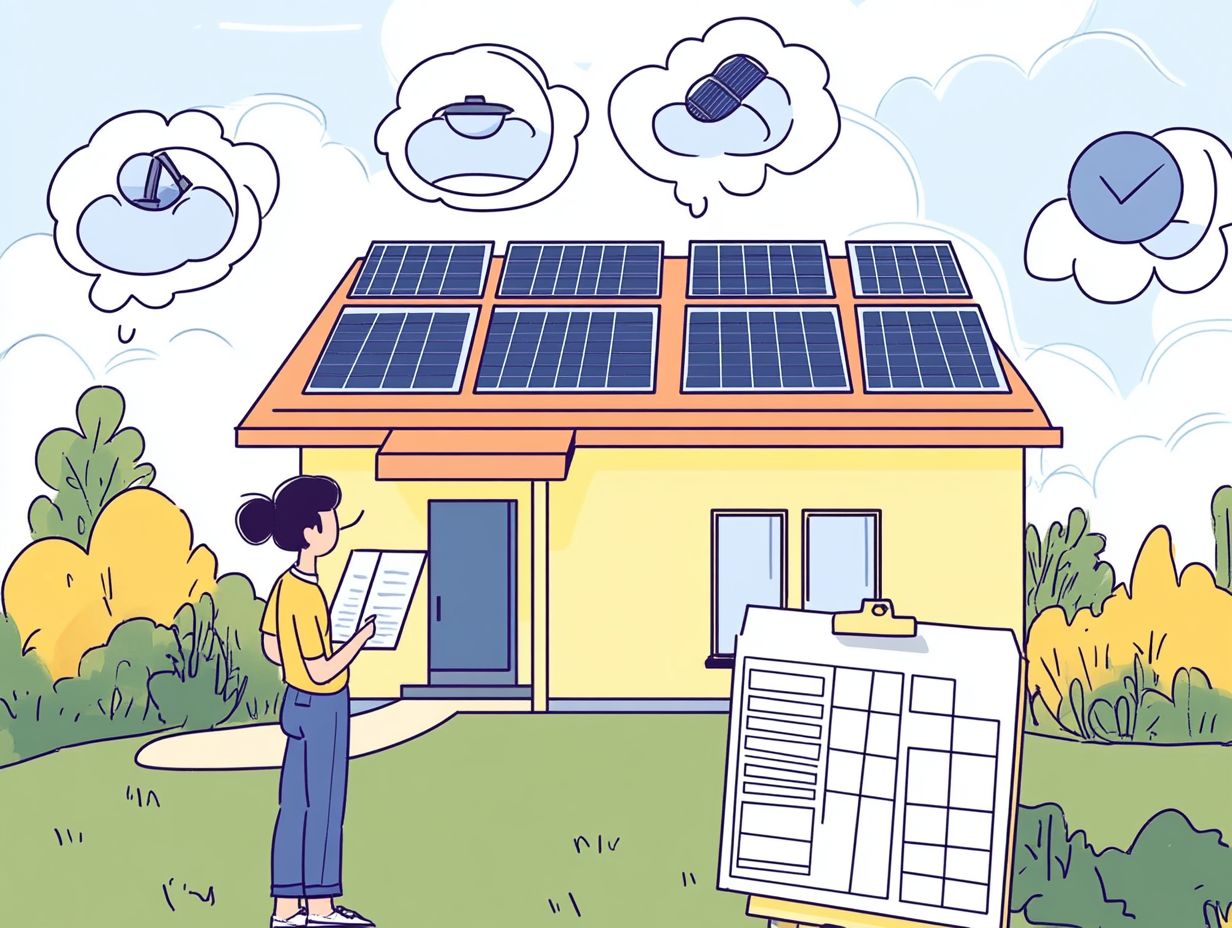Contents [show]
Understanding Solar Energy
Explore the fundamentals of solar energy and its impact on sustainable living.
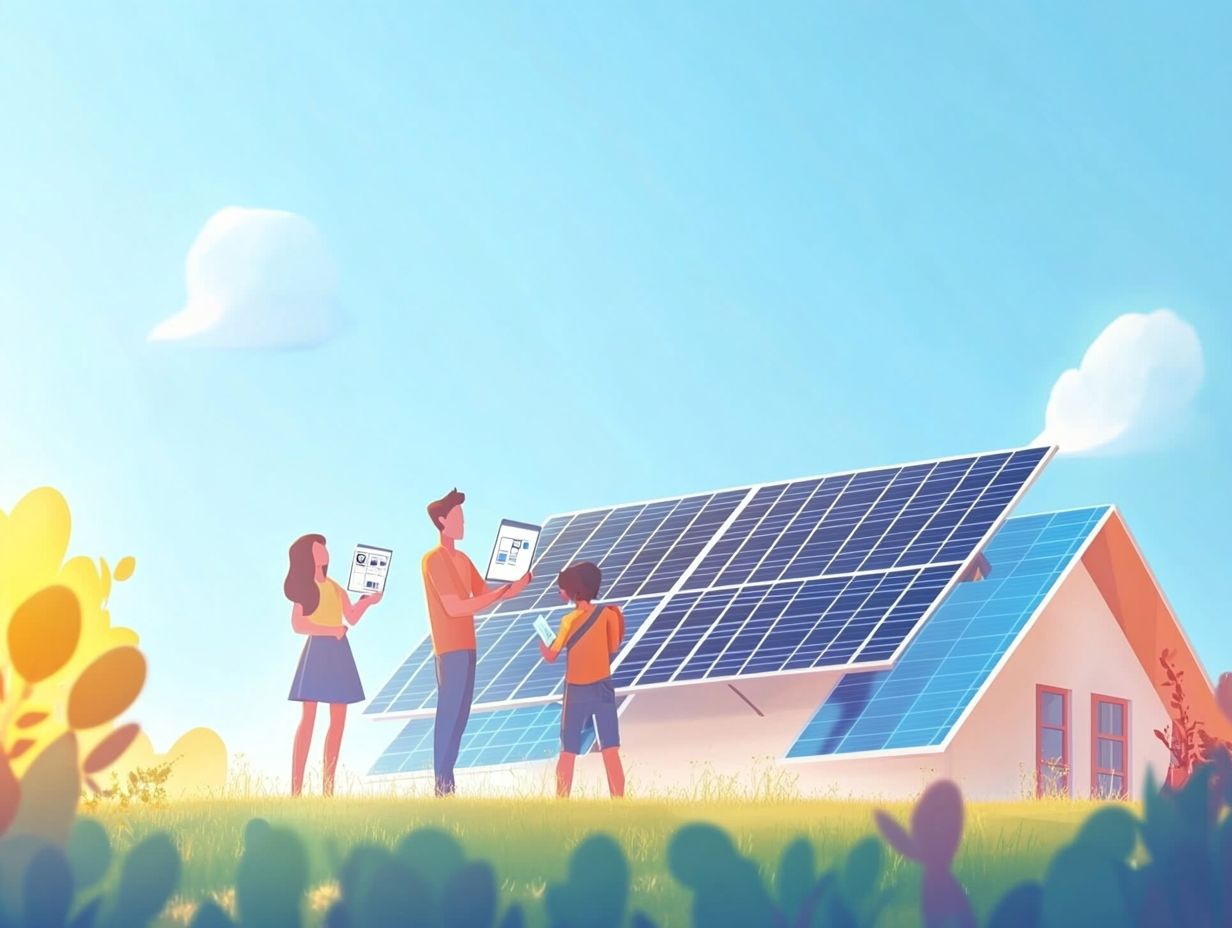
Understanding solar energy is vital for anyone looking to transition to renewable energy solutions that significantly reduce electricity bills and promote sustainable living.
Solar energy taps into the sun’s power using technologies like photovoltaic cells and solar panels, allowing you to generate clean energy right from your home or business through solar installation.
By using solar power systems, you can optimize how you consume energy, boost your overall energy efficiency, and enjoy those long-term savings on utility bills.
Green, M. A., Dunlop, E. D., Hohl-Ebinger, J., Yoshita, M., Kopidakis, N., & Hao, X. (2020). Solar cell efficiency tables (version 56). Progress in Photovoltaics: Research and Applications, 28(7), 629-638. Link
What is Solar Energy?
Solar energy is a fantastic form of renewable energy that you can tap into from the sun’s rays and turn it into usable power. It’s one of the cleanest and most sustainable energy sources out there today, contributing to significant energy savings and reducing the carbon footprint.
This clever process involves solar panels that capture sunlight and transform it into electricity using photovoltaic cells. But solar energy isn’t just about being eco-friendly; it’s crucial for helping you reduce dependence on fossil fuels, which in turn lowers greenhouse gas emissions and promotes energy independence.
Thanks to advancements in solar technology and dropping costs, accessing solar power is becoming easier than ever. This opens the door for widespread use in residential solar, businesses, and industries, enhancing energy resilience.
Plus, it gives you a chance to achieve energy independence and boost energy security, making solar energy a key player in the global move toward a more sustainable future, facilitated by smart grid integration and energy storage solutions.
How Does it Work?
The way solar energy works is pretty fascinating! It all starts with photovoltaic cells in solar panels that convert sunlight into electricity, making this technology a game-changer for electricity generation and solar energy conversion.
These photovoltaic cells, usually made of silicon, absorb sunlight, which gets the electrons moving and creates an electric current. Then, this current travels through an inverter that changes it from direct current (DC) to alternating current (AC), so it can power your home, business, or even feed back into the grid-tied systems.
Once you grasp this transformation, you’ll see just how efficient these systems are at generating renewable energy. Plus, they help reduce your carbon footprint, enhance clean energy usage, and boost energy independence.
By incorporating solar systems into your energy management practices, you can cut down significantly on your reliance on traditional fossil fuels, optimize your electricity usage, and improve your energy usage optimization.
Benefits of Using Solar Energy
The benefits of using solar energy go beyond just saving money in your pocket. They also play a big role in promoting environmental sustainability, energy efficiency, and offering financial savings.
By switching to solar, you can help lower your electricity bills, reduce your carbon footprint, and take advantage of solar incentives. It’s a win-win for both your wallet and the planet!
Lower Electricity Bills
One of the coolest perks of solar energy is how much you can save on electricity bills by generating your own power, improving your rate of return on solar investment, and cutting back on what you rely on utility companies for.
By tapping into sunlight, which is both abundant and free, you can meet nearly all of your electricity needs, especially if you live in an area with lots of sunshine and peak sunlight hours. For example, if your household energy use is about 900 kWh each month, installing a 6 kW solar system could pretty much cover that energy demand. You could end up saving over $100 on your electricity bill every month.
Ultimately, transitioning to solar energy not only benefits your financial situation but also contributes to a healthier planet.
When calculated over a year, this amounts to nearly $1,200 in savings on your utility bills. Plus, with incentives like solar tax credits and net metering—where you can sell any excess energy back to the grid—the financial benefits of solar energy really shine.
This means you can not only recoup your investment in solar but also enjoy a greener, more cost-effective way to power your home through solar financing options.
Environmental Impact
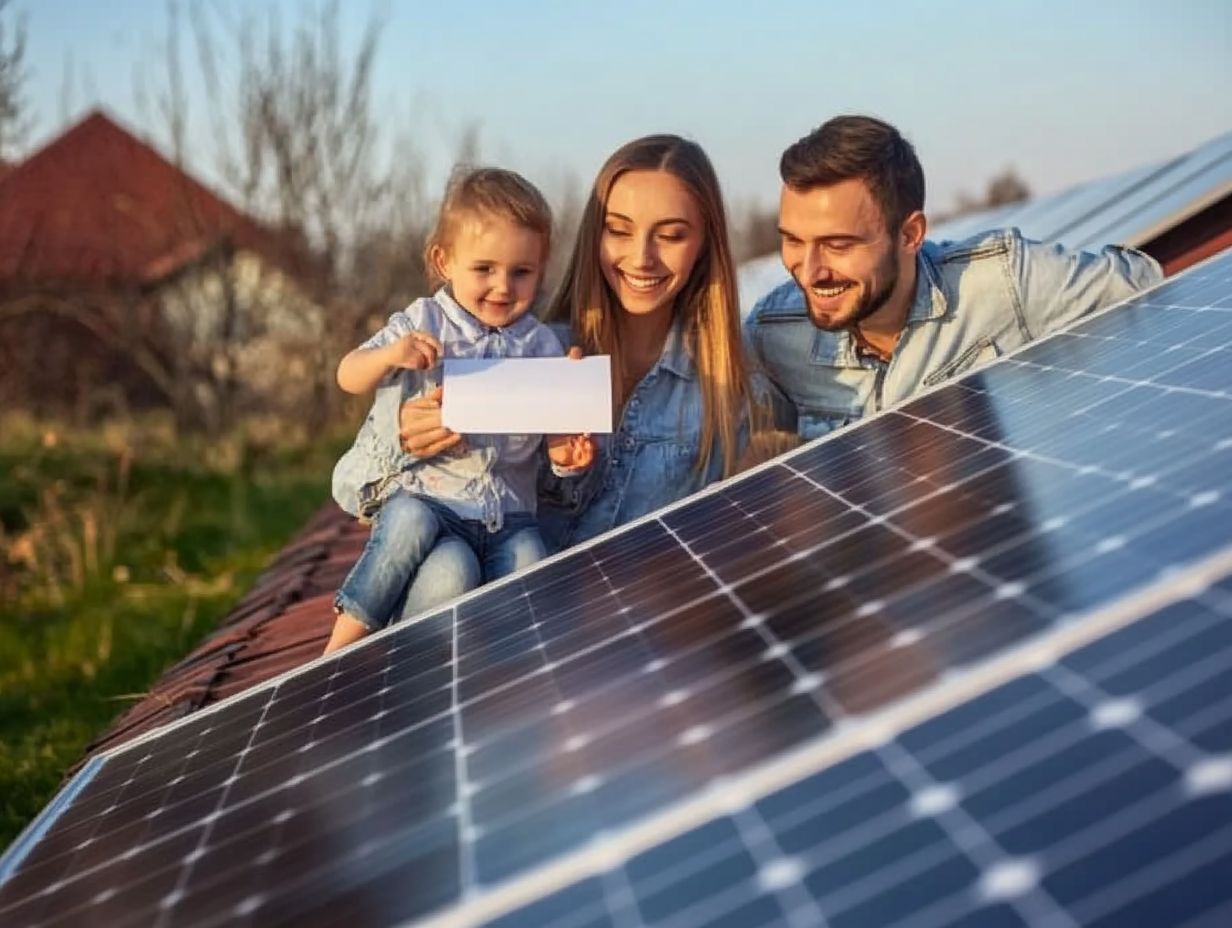
Switching to solar energy isn’t just about saving some bucks; it’s a fantastic way to shrink your carbon footprint and make a meaningful impact on clean energy use and sustainable living.
By tapping into the sun’s power, you can play a significant role in the fight against climate change. Solar energy generation doesn’t emit any direct greenhouse gases, so every solar panel you install helps clear the air, supports the energy transition, and promotes a healthier planet.
Believe it or not, the U.S. Department of Energy says that using solar energy can offset over 80 million metric tons of carbon dioxide every year. As more communities embrace this renewable resource, they’re not just cutting down on fossil fuel dependence; they’re also paving the way for a more sustainable economy that benefits both the environment and future generations through community solar projects and solar research.
This transition presents a significant opportunity to contribute to a cleaner, greener world while enhancing your energy independence and resilience.
Factors Affecting Solar Energy Production
The factors that affect solar energy production are varied and include things like your geographical location, climate conditions, and the latest advancements in solar technology such as solar resource assessment.
All of these elements play a crucial role in figuring out how efficient and effective your solar panels will be, impacting overall solar performance and energy production.
Location and Climate
The geographical location and climate of an area play a huge role in how much solar energy you can generate. If you’re in a region that gets plenty of sun, you can expect to produce a lot more energy compared to places that aren’t as sunny, which impacts your solar market potential.
This difference in sun exposure not only affects how much electricity you generate but also impacts the overall efficiency of the solar panels you have installed. For example, if you’re in a location with longer daylight hours and consistent sunlight—like a desert—you’ll likely see your solar array performing at its best, cranking out energy like a champ.
On the flip side, if you find yourself in a place with lots of cloud cover or at higher latitudes, your energy production might drop, which could lead you to think about using additional energy sources such as energy storage solutions and solar battery storage.
Ultimately, understanding how these environmental factors interact with solar technology can help optimize your energy consumption and reduce costs. This knowledge also enhances your sustainability efforts, regardless of location.
Equipment and Maintenance
The type of solar panels you choose and the maintenance practices you implement are key to optimizing energy efficiency and production, which directly impacts your solar installation and maintenance costs.
Picking high-quality solar panels can really boost the longevity and effectiveness of your system, helping ensure that your solar investment pays off in the long run. Regular solar system maintenance—like cleaning the panels and checking the wiring—is crucial for keeping everything running at peak performance.
If you neglect these practices, you could end up with inefficiencies that lead to higher energy bills, reduced utility savings, and unnecessary repair costs.
While the upfront installation costs might seem daunting, understanding the long-term savings that come from reliable, well-maintained solar technology highlights how important it is to make informed choices when selecting your panels and deciding on upkeep, considering the potential financial incentives.
Steps to Reduce Monthly Electricity Bills with Solar Energy
Reducing your monthly electricity bills with solar energy is all about taking a few smart steps. Start by conducting an energy audit to get a clear picture of your energy consumption and identify potential energy savings.
Once you know where you stand, you can pick the right solar power system that’s perfectly tailored to your needs, which may involve considering solar financing options and energy subsidies.
Assessing Energy Needs
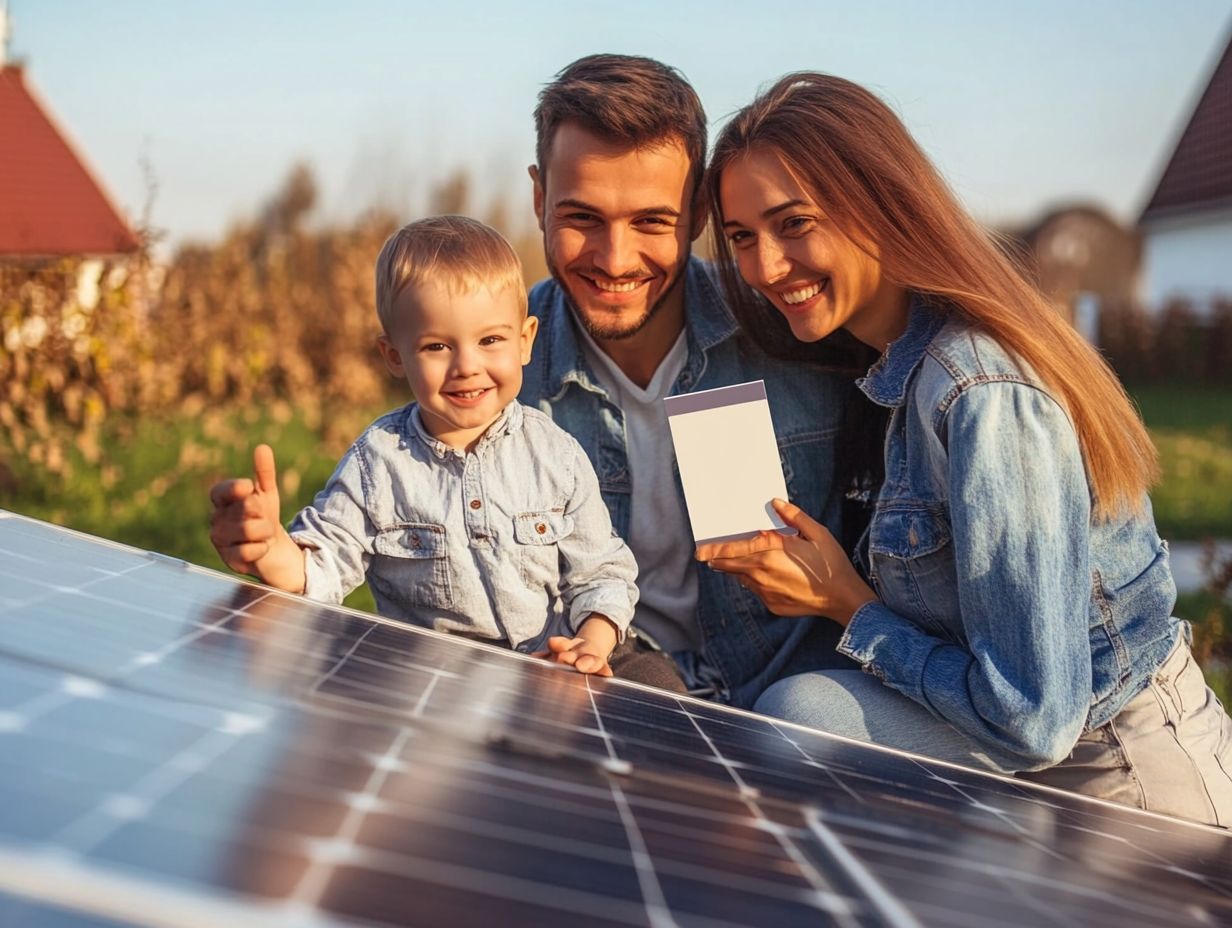
Assessing your energy needs is the first crucial step in managing those pesky electricity bills and figuring out which solar power system suits your household energy consumption best, considering factors like energy usage optimization and energy management strategies.
By doing a thorough energy audit, you can spot areas where energy is being wasted.
Additionally, you can get a clearer picture of your usage patterns throughout the day. This means checking out your past utility bills, tracking when your energy consumption spikes, and evaluating how efficient your current appliances and systems are.
Understanding these elements is super important, as it helps you design tailored energy management strategies that can optimize your consumption and cut down on energy costs. By adjusting your energy usage habits based on this assessment, you could see some significant utility savings.
Plus, it makes choosing the right solar energy solution that perfectly fits your specific needs a whole lot easier, enhancing your solar energy benefits.
Choosing the Right Solar System
Choosing the right solar system means you need to think about a bunch of factors, like your energy consumption needs, the types of solar panels available, and their installation costs to make sure you’re getting the best energy production possible, considering solar project financing and solar incentives.
You should also check out the efficiency ratings of different panel types, like monocrystalline versus polycrystalline, because this can really affect overall performance, solar efficiency, and your return on investment.
It’s super important to understand the available technologies, like solar inverters, solar battery storage options, and demand response solutions, to maximize your energy independence and cut down on your reliance on the electric grid.
It is important to look into local incentives and rebates, as these can seriously impact the overall affordability of your system.
By carefully evaluating all these elements, including solar incentives and energy savings, you can make a smart decision that fits both your budget and your energy goals.
Solar Installation and Maintenance Tips
When you’re installing solar panels, it’s super important to grasp both the installation costs and the ongoing maintenance expenses to keep your solar power system, including photovoltaic systems, running smoothly and efficiently.
Understanding these costs will help you budget better and steer clear of any unexpected expenses later on, making your investment a lot more predictable. One thing you’ll want to think about is whether to hire professionals for the solar installation. It might affect your initial costs, but it could save you some cash down the road with a proper setup, improving your solar system maintenance and energy efficiency.
Don’t forget to regularly check on how the system is functioning. This means cleaning the panels and looking out for any shading from nearby trees or buildings. These little checks can really boost your energy efficiency and overall energy production.
Plus, taking these preventive steps not only extends the life of your panels but also maximizes their energy output, contributing to your energy independence, which means you’ll see some nice savings on your utility bills.
Financial Incentives for Solar Energy
Financial incentives, such as solar tax credits and rebates, for switching to solar energy can really help you cut down on those upfront costs, making it easier for you to invest in solar power systems and achieve financial savings.
Options like tax credits, rebates, solar financing, and different financing methods are out there to help you make the switch without breaking the bank and minimizing your carbon footprint.
Tax Credits and Rebates
Tax credits and rebates are some of the best financial incentives out there for you if you’re thinking about switching to solar energy. They can really help you save some serious cash and encourage more people to make the switch to clean energy.
These solar incentives can significantly cut down the upfront costs of installing solar panels, making it way more accessible for families like yours, and encouraging energy transition.
For example, the Federal Solar Investment Tax Credit (ITC) lets you deduct a certain percentage of your installation costs from your federal taxes. Plus, many states offer their own rebates that can boost those savings even more. Learn more about the ITC.
By taking advantage of these programs, you can potentially save thousands of dollars, reduce your energy bills, and contribute to environmental sustainability.
As solar technology advancements keep getting better, you can expect these financial benefits to grow, making renewable energy and sustainable energy even more attractive for you.
Solar Financing Options
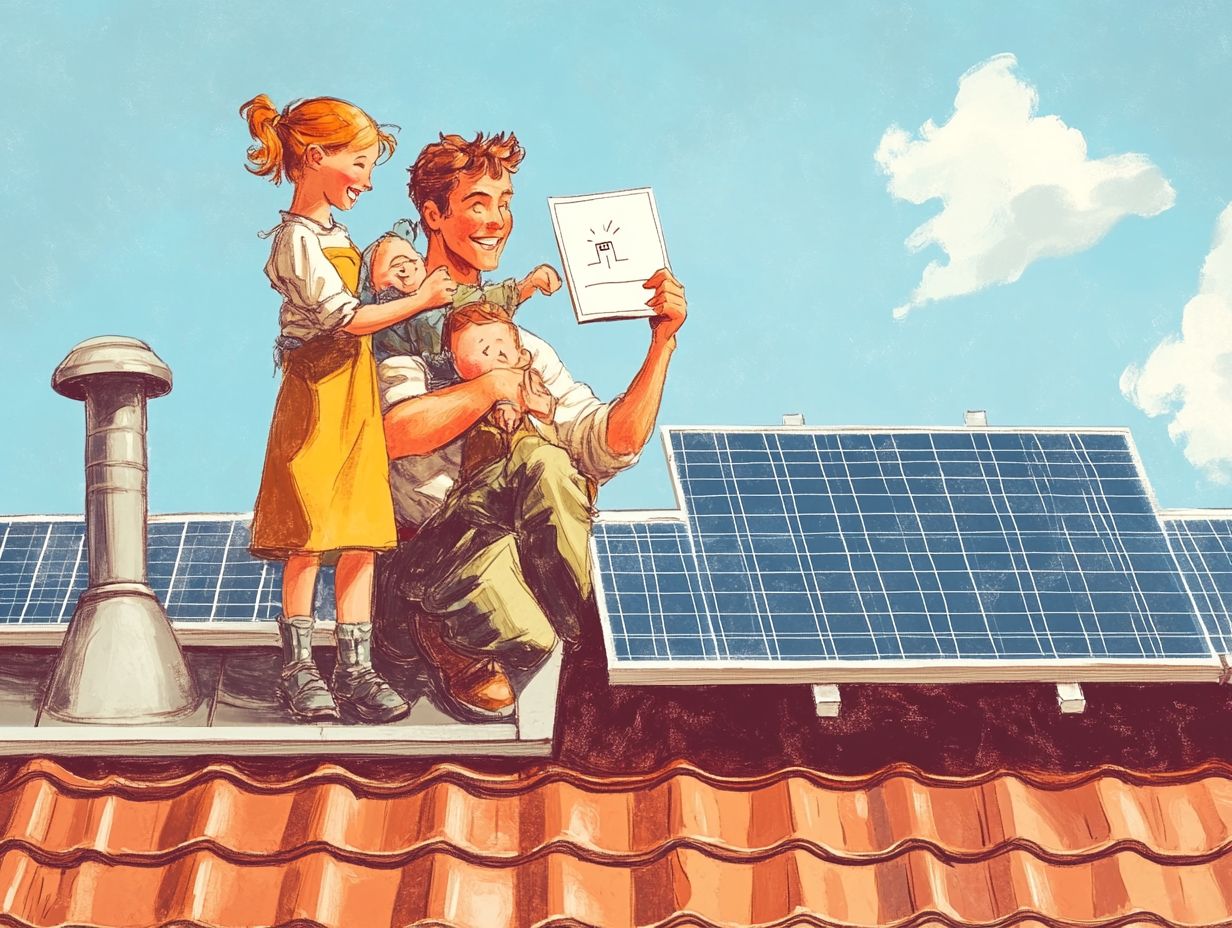
Exploring different financing options, like solar leasing, power purchase agreements, and solar project financing, can really make switching to solar energy easier on your wallet. This enables you to benefit from energy cost savings without straining your finances.
These financial solutions not only lower the initial investment hurdle but also offer flexibility based on your personal situation. For example, with solar leasing, you can enjoy solar power with little to no upfront costs by paying a monthly lease, contributing to energy management and residential solar adoption. This can lead to more predictable energy expenses in the long run.
On the other hand, power purchase agreements (PPAs) allow you to buy the electricity generated by solar systems at a fixed rate, often lower than what you’d pay your utility company. This fixed rate is typically lower than your current utility rates, making solar more financially appealing. This helps you keep future electricity costs from skyrocketing, while supporting clean power and reducing household energy use.
Just keep in mind that both options might mean giving up some tax benefits and incentives that typically go to those who own their systems outright, which is an important consideration when making financial decisions, especially if you’re looking into maximizing your potential rate of return and solar investment.
Frequently Asked Questions
What is solar energy and how can it reduce my monthly electricity bills?
Solar energy is a renewable source of energy generated by leveraging the capabilities of sunlight and solar energy conversion. By installing solar panels on your property, you can produce your own electricity and reduce your reliance on traditional electricity providers, resulting in lower monthly electricity bills.
How much can I expect to save on my monthly electricity bills by switching to solar energy and increasing energy efficiency?
This varies depending on your location, size of your solar system, energy usage, and peak sunlight hours. However, on average, homeowners can save anywhere from 50-100% on their monthly electricity bills by using solar energy, enhancing energy efficiency and achieving sustainable energy.
What are the upfront costs of installing a solar energy system and how long until I see a return on my investment in solar installation?
The upfront costs of installing a solar energy system can vary, but on average it can range from $10,000-$25,000. However, with the savings on monthly electricity bills and the benefits of solar efficiency, most homeowners see a return on their investment within 5-7 years on average.
Do I still have to pay for electricity from my local utility company if I switch to solar energy and utilize energy monitoring?
It depends on your location and the size of your solar system. In some areas, you may still need to pay for a minimum amount of electricity from your local utility company, but it will be significantly less than what you were paying before. In other areas, you may be able to completely eliminate your reliance on traditional electricity providers, achieving energy independence through net metering.
Will I still have electricity during power outages if I have a solar energy system with solar battery storage?
It is possible to still have electricity during power outages with a solar energy system, but it depends on the type of system you have. If you have a grid-tied system, you will not have electricity during power outages for safety reasons. However, if you have a solar battery storage or an off-grid solar system, you can still have electricity during power outages, thereby enhancing energy resilience during outages.
What happens if I produce more electricity than I use with my solar energy system?
If you produce more electricity than you use, it can be fed back into the grid and your local utility company may give you credits for the excess energy through net metering. These credits can then be used to offset your electricity bills in the future, contributing to a reduced carbon footprint and the promotion of clean technology.


